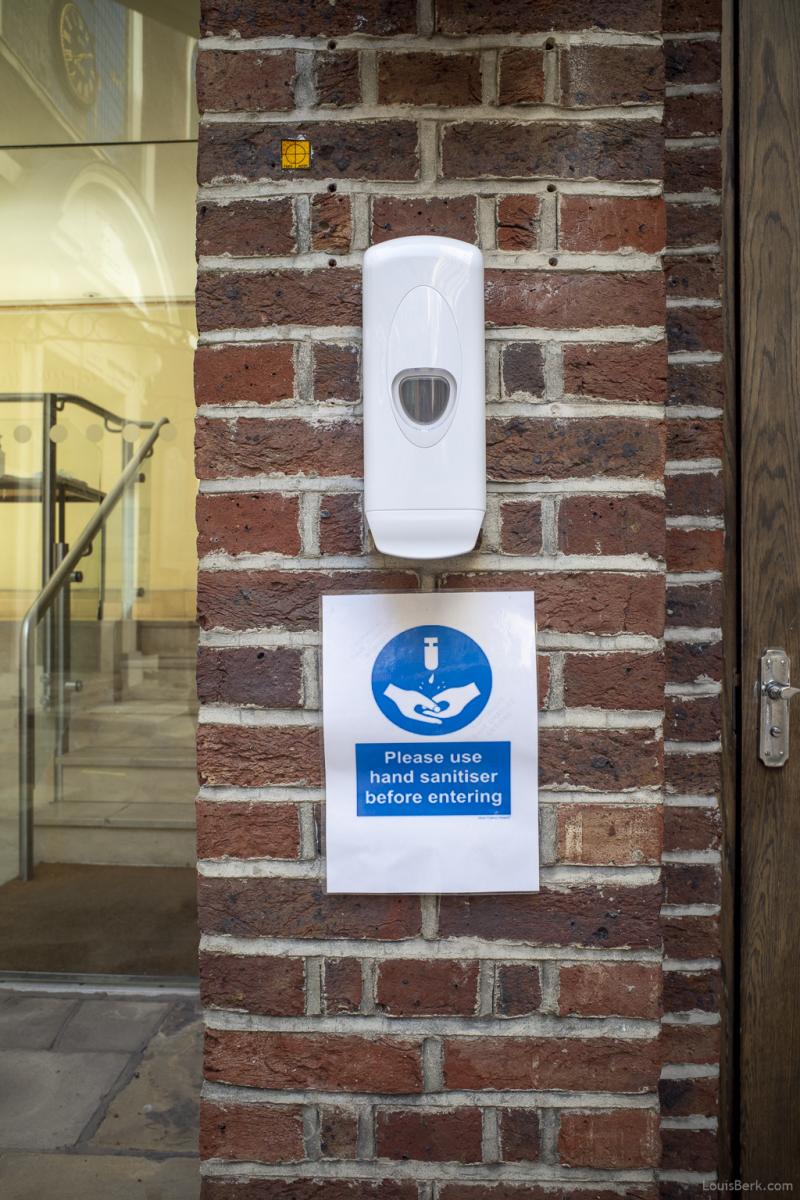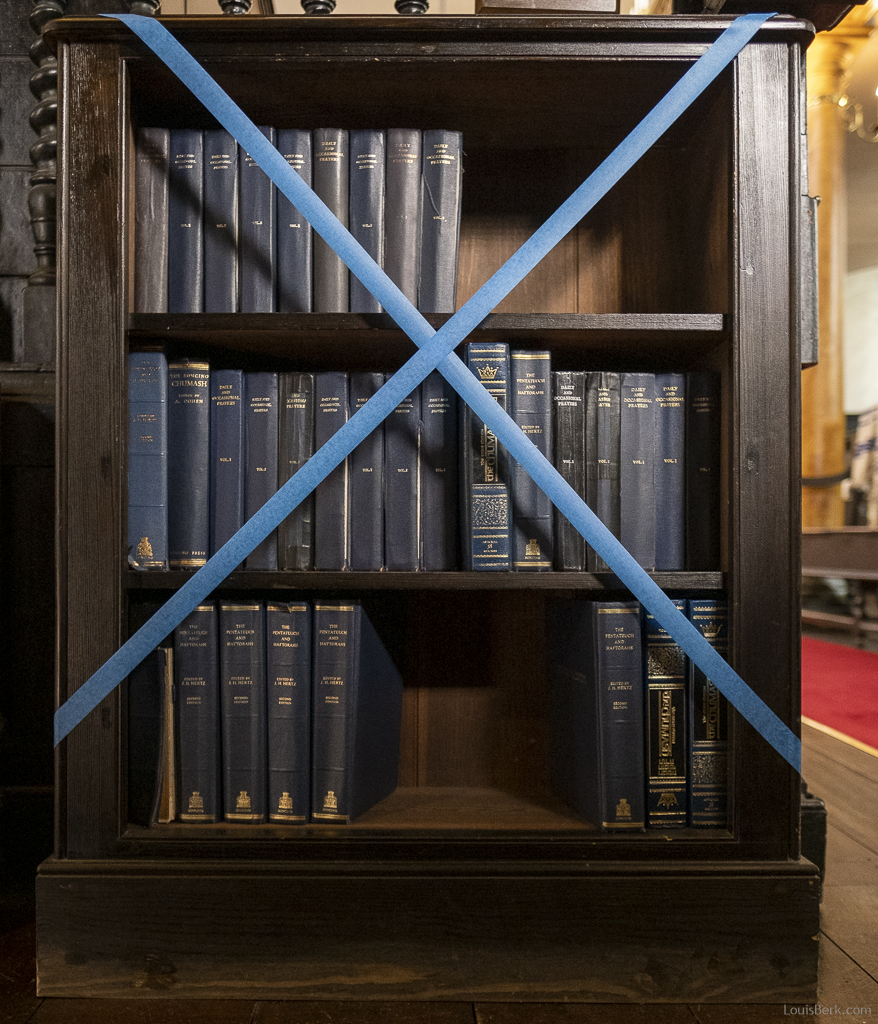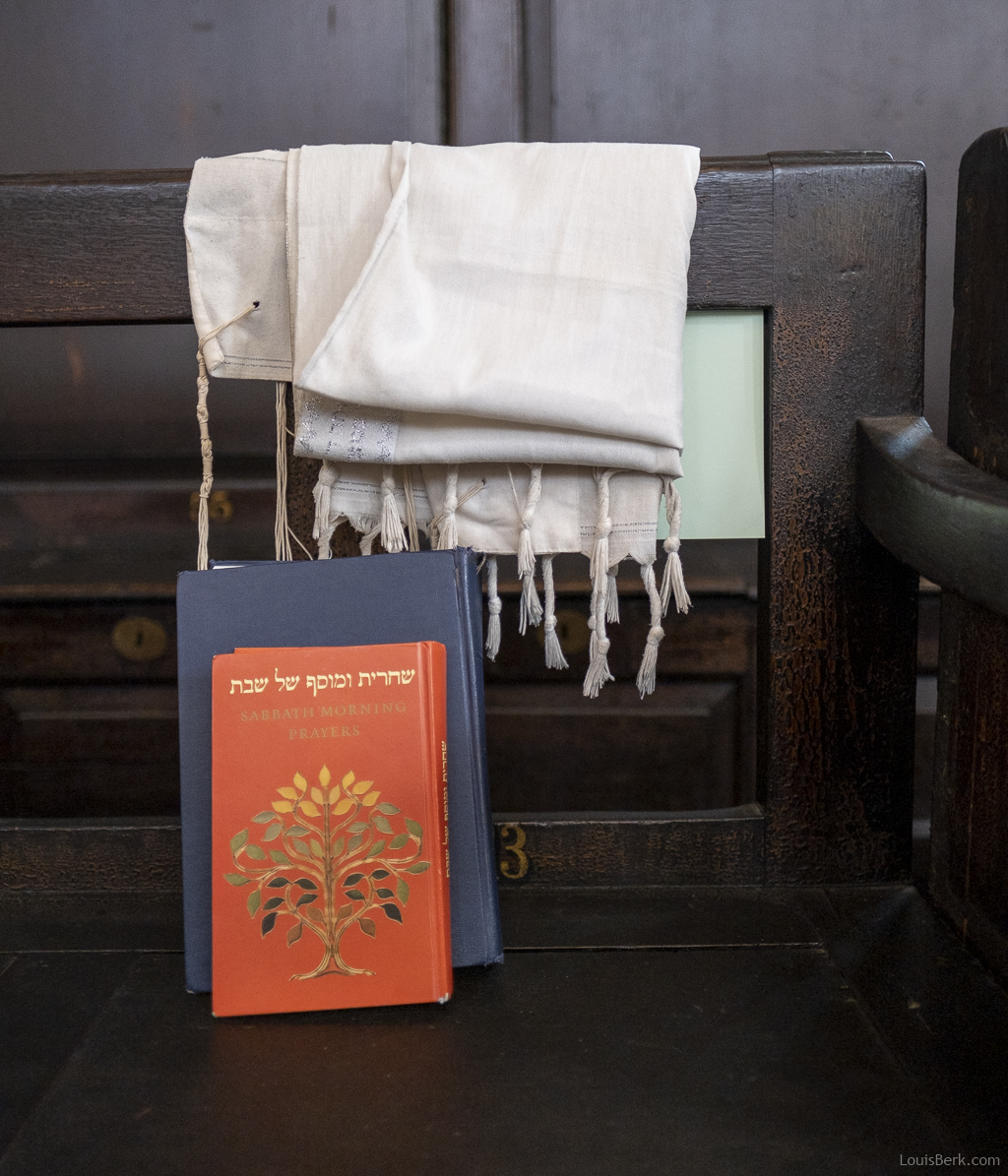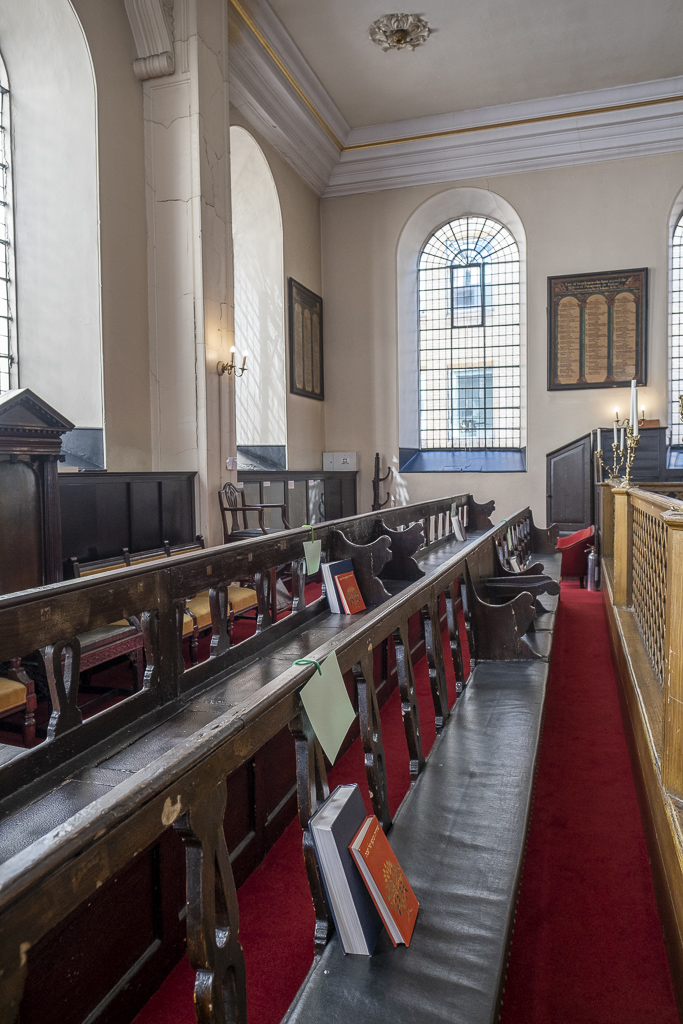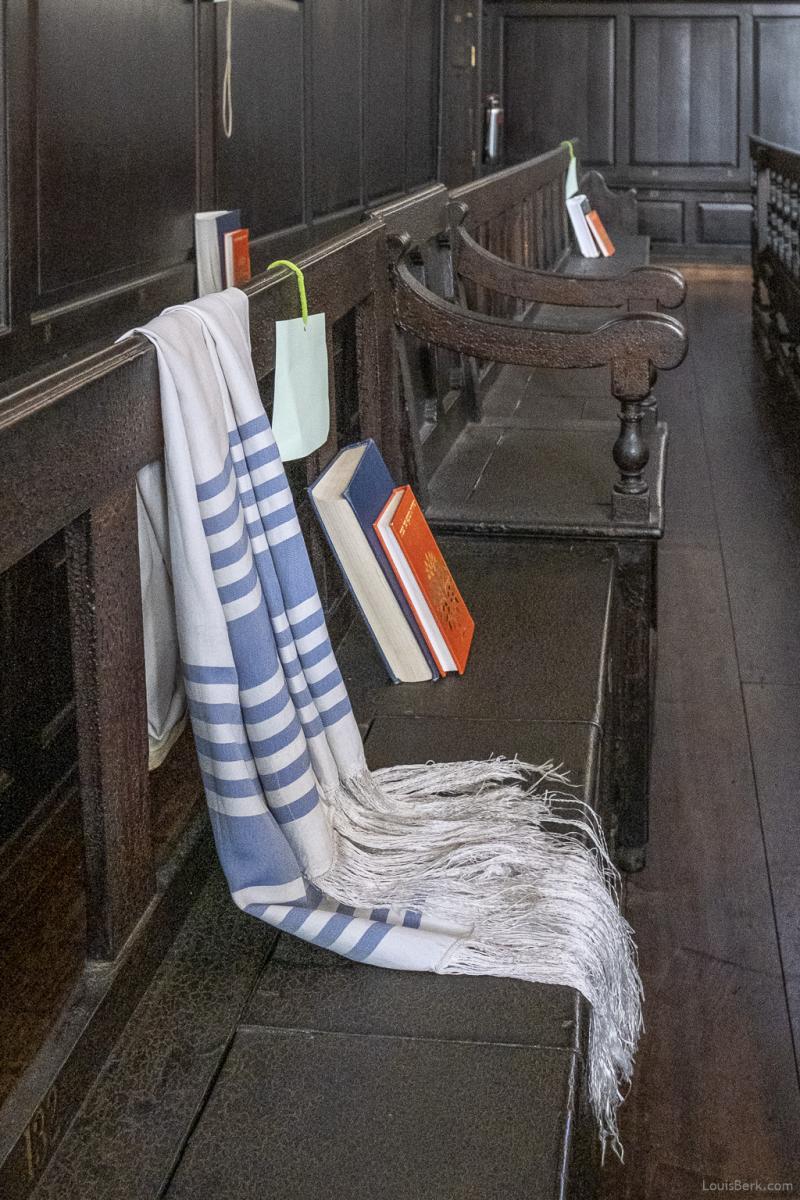WORSHIP IN THE TIME OF A PANDEMIC
How the UK's oldest synagogue and community are responding to social distancing.

Bevis Marks Synagogue entrance, with a clear reminder of social distancing.
The synagogue of the Spanish and Portuguese Jewish community at Bevis Marks, within the square mile of the City of London, is the oldest in the UK. Constructed in 1701 during the reign of King William III, the architectural and cultural significance of the building is recognised by having a rare Grade I listing. In this time of Pandemic how is the building being managed to maintain social distancing?
In late 2019 I was successful in my application to become the photographer attached to the Bevis Marks Heritage Foundation. This charitable organisation aims to preserve the unique position of Bevis Marks within the Jewish community in the UK as well as its architectural importance. Although my work is in a professional capacity it is nevertheless a privilege to be able to photograph the engagement of the community as well as the beautiful architecture and community artefacts, some of which date far earlier than the 17th century when the community first became established in England.
At this time all places of worship in the UK have to comply with government requirements to maintain social distancing. Last week I spent some time with the Rabbi as he showed me the arrangements.
|
|
|
From the sublime to the highly necessary: (left) the beautiful entrance to the synagogue with a clear one way system shown on the floor, (r) hand sanitiser is to be used before entering the sanctuary.
These photographs reflect the detailed thought that has gone into allowing the synagogue to open for services while at the same time protecting the members of the congregation. Apart from maintaining an appropriate distance between worshippers it is also important that no book or other ritual coverings be introduced to the environment.
|
|
|
Protecting the congregants: (l) the book cases containing prayer books is clearly marked as not in use, (r) each place is marked with a piece of green card and and prayer books, and the ritual 'Tallit' or prayer shawl for male worshippers.
To avoid the spread of Covid-19 from shared surfaces the bookshelves are clearly marked as not in use. Instead, at each place a green card marks the seating for a congregant which is of course socially distant from his/her neighbour. The Rabbi places the prayer books which include a copy of the Pentateuch (the Torah, from which a portion is read during a service) and for male congregants a 'Tallit', or ritual prayer shawl at each place in the male section of the sanctuary. The idea here is to avoid anyone bringing into the synagogue materials and items which may contain Covid-19 on the surfaces. After the service has finished, all items are left in place and not touched again for 48 hours. This is in line with government scientific advice that the spores of Covid-19 are inactive after this time. The whole process will be repeated for each service.

Screening off: (above) protection of the congregants includes a rigid screen on raised platform of the 'Bimah', from which the Rabbi and other participants lead the service.
The raised reading platform or 'Bimah' as it is known in Judaism is the second focal point of services (the first being the Ark containing the Torah scrolls). From here the Rabbi and other participants lead the daily and weekly services. During a sabbath service the Torah scroll will be placed on the Bimah and the weekly portion read from it (as well as festival services during the year). To avoid any possibility of contamination with the congregation a screen has been erected around the lectern. The Rabbi also informed me that during weddings, which have now resumed, he has to wear a full face visor while conducting the ceremony.

Bevis Marks includes some interesting architectural features such as the special seating area for the leaders of the congregation, which must also comply with social distancing measures, of course.
|
|
|
Upper and lower level seating: (l) in keeping with many religions, women are segregated from men during services. In a traditional synagogue like Bevis Marks this is provided by the first floor 'Women's Gallery', (r) on the ground floor another view of the seating and social distancing arrangements for the male congregants.
I am very grateful for the time given by Rabbi Morris to show me the preparations that Bevis Marks has made. In these uncertain times many congregants want to maintain their participation and spirituality by attending services. Sadly, it may be months or even years before social distancing conditions can be relaxed.
All photographs copyright 2020 LouisBerk.com, reproduced with kind permission by the Bevis Marks Synagogue and the Bevis Marks Heritage Foundation.


